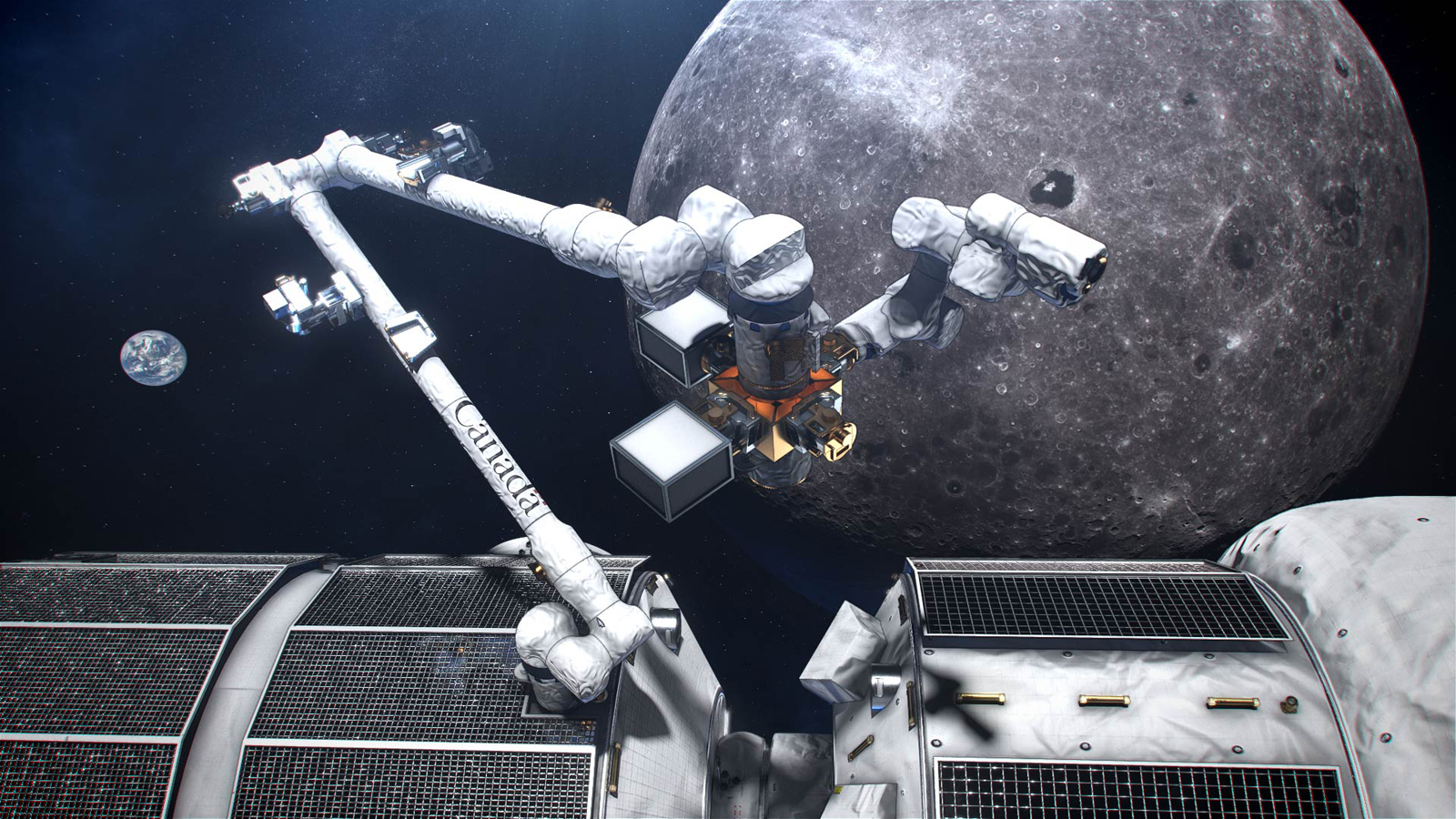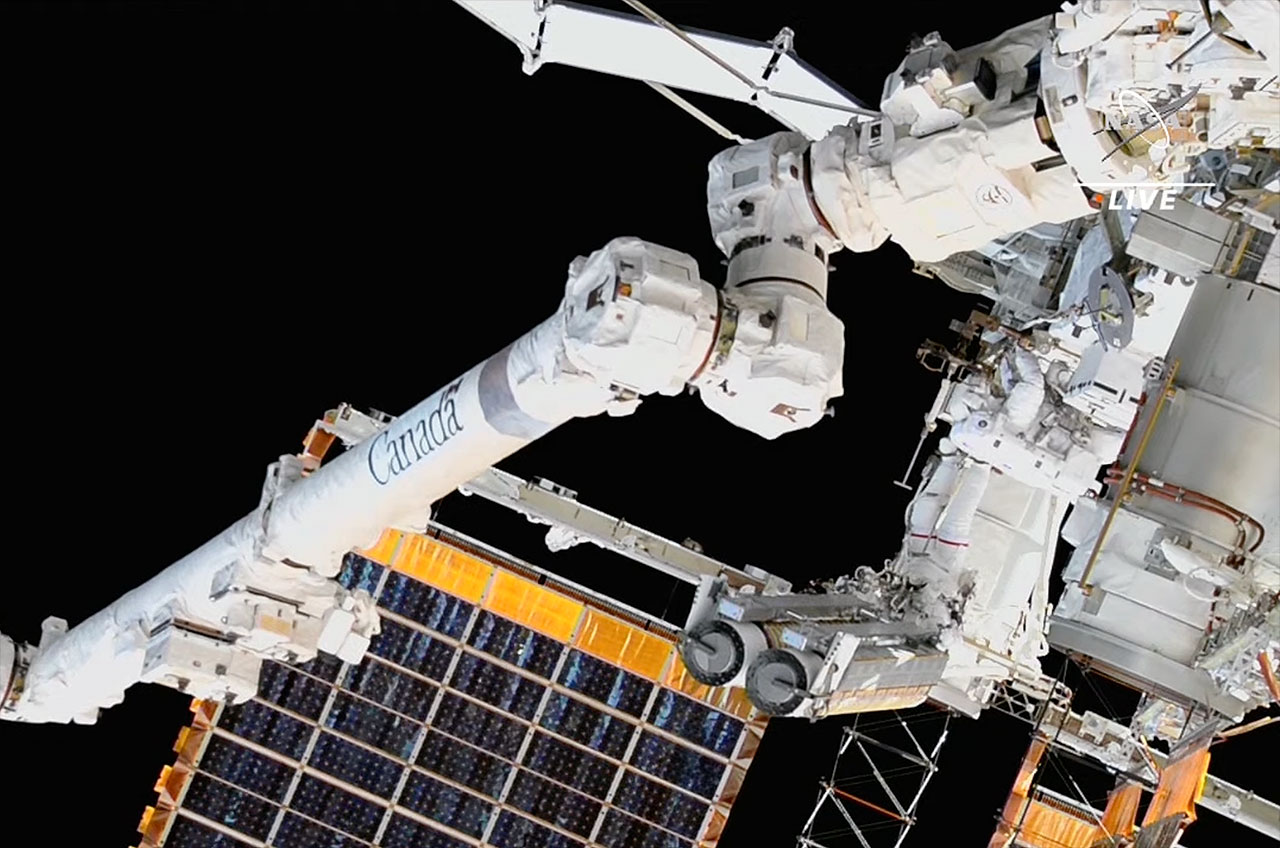
Canadarm3 will fly to the upcoming NASA Gateway space station in five years or so on the back of a lucrative new design contract drawn from earlier funding of the program, Canadian space officials pledged.
The robotic arm, key to building the Gateway space station that will play a key role in NASA's series of crewed Artemis program lunar missions, received a $730 million ($999.8 million in Canadian dollars) design and testing contract on Thursday (June 27) from the Canadian Space Agency (CSA). This will allow Canadarm3 to launch no earlier than 2029.
"We are entering an exciting period where Canadarm3 will take shape and come to life on our production floor," Mike Greenley, CEO of robotic arm builder MDA Space, said in a Canadian government statement about the announcement. "Canada's participation in the Artemis program reinforces and expands our national and industry leadership as a new era of space opens up."
"Canadian robotics have played a critical and game-changing role in the assembly and maintenance of space systems and scientific research for decades. Our expertise is well-regarded and sought after internationally," CSA president Lisa Campbell said in the same statement.
CSA is sending the first Canadian around the moon, Jeremy Hansen, no earlier than 2025 as part of the NASA-led Artemis 2 mission. That's because of the agency's contribution of Canadarm3 and related moon endeavors, first announced in 2019. More CSA Gateway missions will follow — and a possible Canadian moon landing in the future.
Related: Artemis 2's Canadian astronaut got their moon mission seat with 'potato salad'
Canadarm3 is the next-generation successor of the wildly successful robotic series active in space for more than 40 years, including Canadarm for the space shuttle and early International Space Station (ISS) missions, and Canadarm2 that performs maintenance and spacewalk work on the ISS. MDA Space is the current manager of the Canadarm programs along with Dextre, a robotic maintenance tool also aboard the ISS.
The Canadarm series' contribution to space cannot be overstated. The original Canadarm was the primary tool that reached out and grabbed NASA's and European Space Agency's Hubble Space Telescope during five maintenance missions, allowing the famed telescope to keep operating nearly 35 years after its 1990 launch. Canadarm2 helped build the ISS, alongside Canadarm. Then as commercial cargo missions were developed to send supplies to the ISS, Canadarm2 was successfully repurposed for robotic catches in orbit while still doing spacewalk and maintenance work.

While the CSA's baseline budget is modest — it plans to spend about $350 million Cdn ($255 million USD) in fiscal year 2024-25, for example — the Canadian government has funded billion-dollar-scale moon and ISS contracts in a series of extra allocations since 2019. (CSA also works regularly with environmental and defense departments to pool budgetary resources on satellites and other projects.)
MDA Space's contract comes from already announced funding for Canadarm3. In 2019 the Canadian government pledged "$2.05 billion [$1.5 billion USD] over 24 years in Canada's participation in lunar initiatives, including building Canadarm3", according to CSA's materials.
More moon funding came in March 2023, to the tune of $1.43 billion Cdn ($1.05 billion USD), but focused on a lunar utility vehicle for astronauts on the moon and a set of Canadian science components on Gateway.
The new Canadarm3 contract, covering Phases C and D, will include final design, construction, system assembly, integration and test, MDA Space stated. MDA Space already received smaller contracts for the earlier Phases 0, A and B.
Canadarm3 aims to use artificial intelligence for a degree of autonomous maintenance and monitoring at Gateway, which is crucial as the station will only be occasionally staffed. The arm system includes two arms, in fact: a small "dexterous" arm building on Dextre's technology, along with a longer limb measuring about 28 feet (8.5 meters). Also included is a little caddy to tote tools around Gateway.
As is typical of large space projects, Gateway has faced delays and the delivery of Canadarm has also been pushed back. Gateway was expected to be operational in 2026, along with the robotic arm, when Canadarm3 was first announced in 2019.
That said, the arm is already spurring new business in the Canadian space community, especially with MDA Space. The Toronto-area company just launched a series of commercial robotics products based on Canadarm technology, after selling related robotics to both Axiom Space and the Starlab consortium (including Voyager Space and Nanoracks) for their own proposed space stations.







